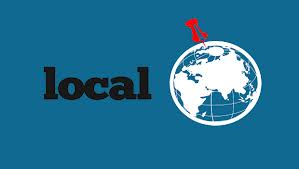Google+ business optimization can help you increase the ranking of your pages in search results but using the wrong strategies can ruin your campaign. Go over this article to learn more about the most common Google Local Optimization mistakes that can easily be avoided.
Common Google Local Optimization Mistakes
 You should never use unethical methods to optimize your content. Methods such as keyword stuffing, placing your back-links on link-farms or using false redirection URLs are known as Black Hat Google Local Optimization and frowned upon by search engines. You might get excellent results with these methods on the short term but search engines will eventually notice that your methods are not ethical. Your pages can be banned from search results if you get caught using these methods.
You should never use unethical methods to optimize your content. Methods such as keyword stuffing, placing your back-links on link-farms or using false redirection URLs are known as Black Hat Google Local Optimization and frowned upon by search engines. You might get excellent results with these methods on the short term but search engines will eventually notice that your methods are not ethical. Your pages can be banned from search results if you get caught using these methods.
Do not assume that you do not have to work on your Google Local Optimization campaign anymore once you optimize your content. You always need to look for ways to improve your Google Local Optimization strategies. Optimize the fresh content you add to your website and make some changes to the structure of your site if you add new important pages. Search engines often upgrade the methods used to analyze and index content. Stay up to date with the new methods used and adapt your Google Local Optimization campaign accordingly.
Google Local Optimization experts recommend to create an XML sitemap to make your different pages easier to find. Keep in mind that your sitemap will not make a difference if your site is not well-organized. You can organize your site efficiently by connecting all your pages and placing your links in visible places. Create some site-wide links for your main pages and draw attention to these links by organizing them in a menu. Connect your pages through individual links by placing links to more similar articles within the first three paragraphs of each article.
Optimize Your Google Places Listing
Do not overuse strong keyword phrases. Keywords are needed to optimize your content but you should use them to describe your elements instead of placing them within your texts. Use HTML tags to describe your content, for instance by adding alt tags to your images or title tags to your pages and articles. Search engine spiders will analyze title tags, meta tags, meta descriptions and alt tags for keywords. The anchor text of your links should also be filled with strong keywords to describe the content of the pages you are linking to.
Do not waste your time with low quality back-links. Creating more back-links is an excellent way to get more traffic for your website but you need to place these links carefully. Sharing a large number of links by commenting on blogs or news stories is not a good strategy. You need to get some quality links that will be noticed by the kind of visitors you want to target. Use article directories, online encyclopedias and message boards to share links yourself and create partnerships with other webmasters to get your content featured.
If you have been committing any of these common Google Local Optimization mistakes, it is time to make some changes to the strategies you use. Do more research on efficient methods and make sure the strategies you use are up to date.